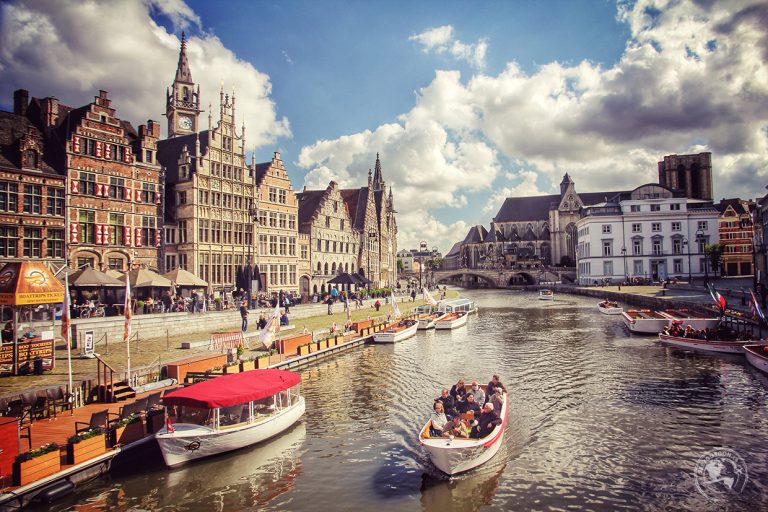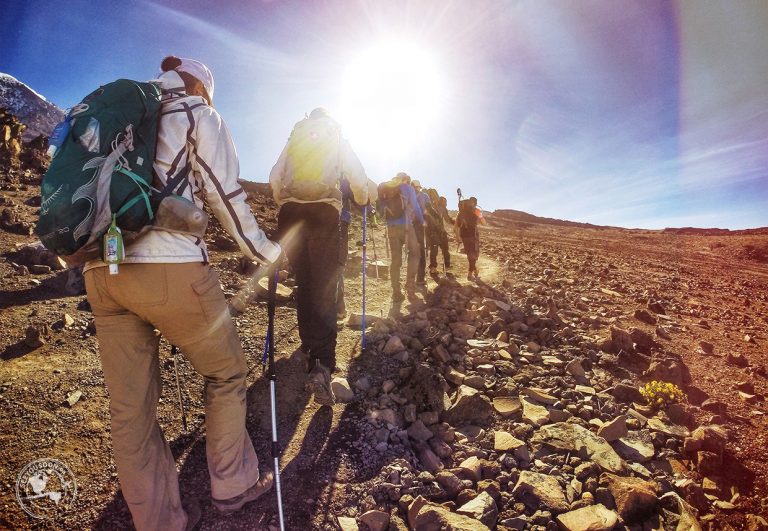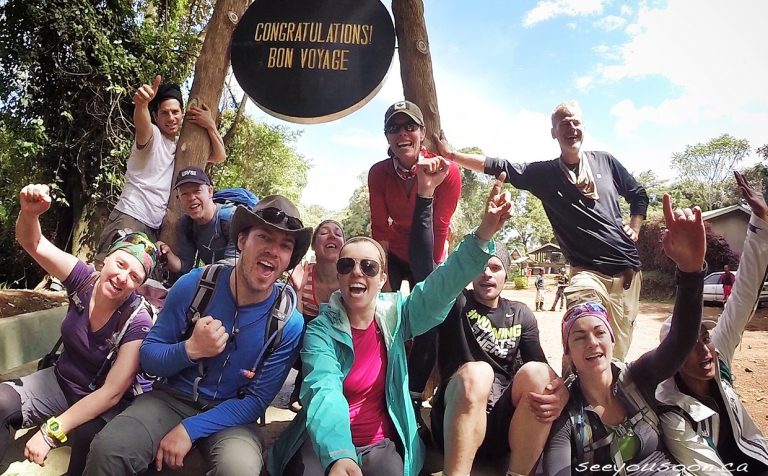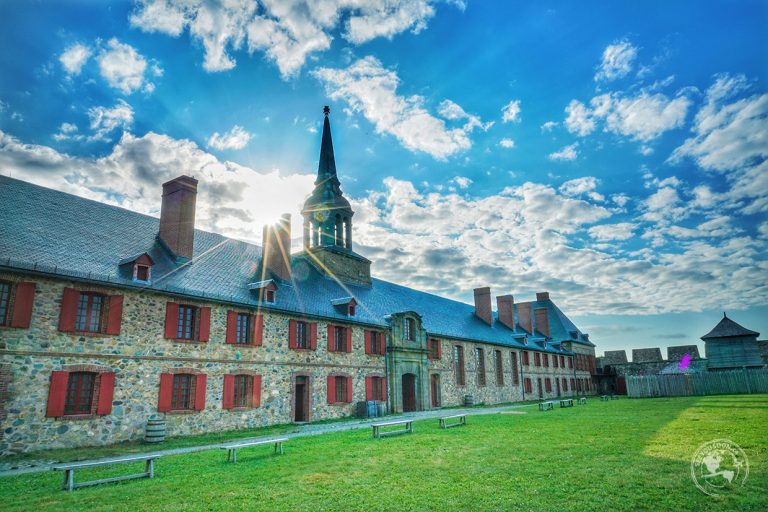Pandas!
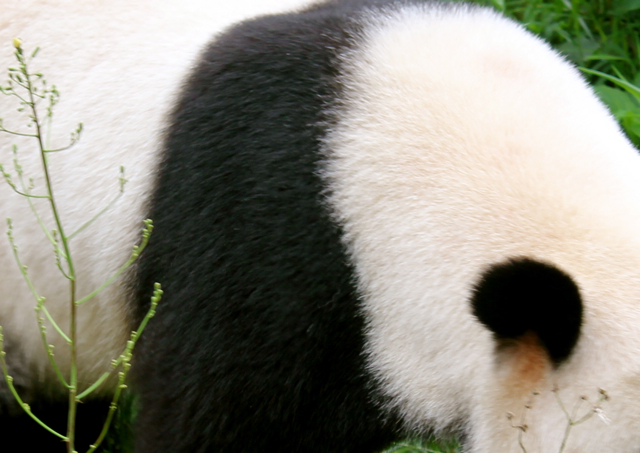 What’s black and white and furry all over? A panda of course!
What’s black and white and furry all over? A panda of course!
On our must-see list for China we wanted to visit a panda reserve. With a little bit of research, we found one of the best ones in the country located in the city of Chengdu. So we specifically traveled there just to see these cute, bumbling animals. And it was absolutely an incredible and worthwhile visit.
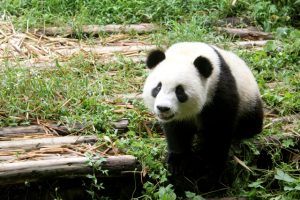 Native to central-western and southwestern China, pandas spend their life roaming and eating bamboo. Bamboo comprises 99% of a panda’s diet and in the wild they can eat it for up to 16 hours a day. Unfortunately, due to deforestation, farming, and the increase of bamboo as a textile commodity, their food source has been drastically reduced resulting in the decline of the species. The giant panda is an endangered animal. In 2008 it was estimated only 1600 giant pandas still existed in the world, with 80% of those pandas located in the Sichuan province of China.
Native to central-western and southwestern China, pandas spend their life roaming and eating bamboo. Bamboo comprises 99% of a panda’s diet and in the wild they can eat it for up to 16 hours a day. Unfortunately, due to deforestation, farming, and the increase of bamboo as a textile commodity, their food source has been drastically reduced resulting in the decline of the species. The giant panda is an endangered animal. In 2008 it was estimated only 1600 giant pandas still existed in the world, with 80% of those pandas located in the Sichuan province of China.
In 1987 the Chengdu Panda Reserve was founded to help the advancement and conservation of the giant pandas in China. They first started out with 6 pandas that were rescued from the wild and currently have more than 80 pandas, most of which have been bred in captivity. Just this past August they welcomed a number of baby pandas including a set of twins.
The reserve is large, measuring 106 hectares (increasing to 200 in the future), and offers spacious areas for the pandas to roam, eat and play. The grounds have been divided into different sections based on the age of the pandas and species, including two areas for the lesser-known panda cousin, the red panda.
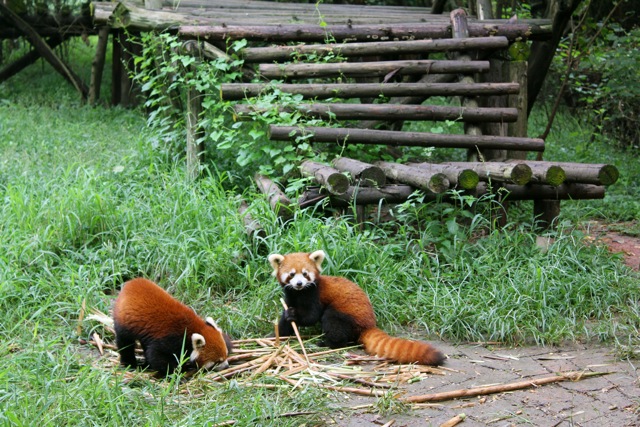
We had a really great morning walking around the grounds and watching the pandas. You can’t help but smile and laugh when you see them. They are clumsy and goofy, and sometimes trip over their own paws. The life of a panda in the reserve seems quite ideal, filled with such simple yet enjoyable activities of eating, belly scratching, bum scratching, sleeping, climbing trees and playing around all day. They are simply adorable and you’ll watch them wishing you could take one home with you.
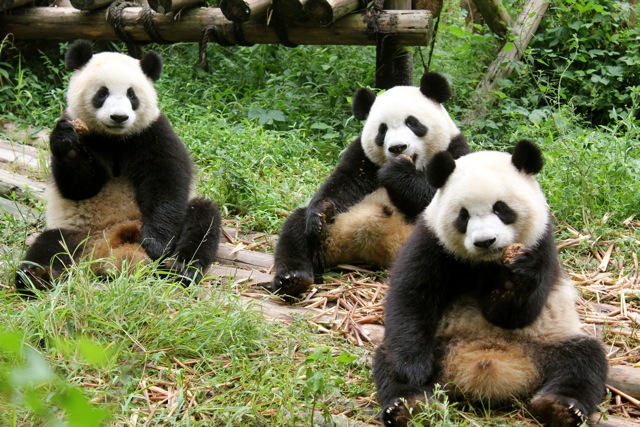
One of the highlights was being able to watch the pandas get fed. Along with bamboo, the pandas in the reserve are fed apples and specially made cakes to supplement their diets. Check out the video below to see the pandas eating and enjoying a typical morning.
Another highlight for us was being able to see the newborn pandas. At only a month old, they were each sleeping so peacefully in their incubators. The sleeping position of choice seemed to be either on their backs or tummies with all four paws stretched out. They were cute, black and white blobs of straggly fur. As we watched them, we could even see them twitch, most likely from their dream-induced sleep. Unfortunately for us, photos were not permitted, but then again, we’re trying to save an endangered species here.
What You Need to Know: Entrance fees are 58rmb for adults and 29rmb for students. To get to the Panda Reserve, take bus 532 from Zhao Jue Si Bus Station (bus ride costs 2rmb and takes about 20 minutes to reach the reserve). It’s best to go first thing in the morning (arrive between 8:30am and 9:00am) since the pandas will be most active during feeding time. Also, please keep in mind that this is a working reserve and not a zoo. Signs are clearly posted reminding visitors to keep voices quiet and to not use flash photography since it disturbs the animals.

